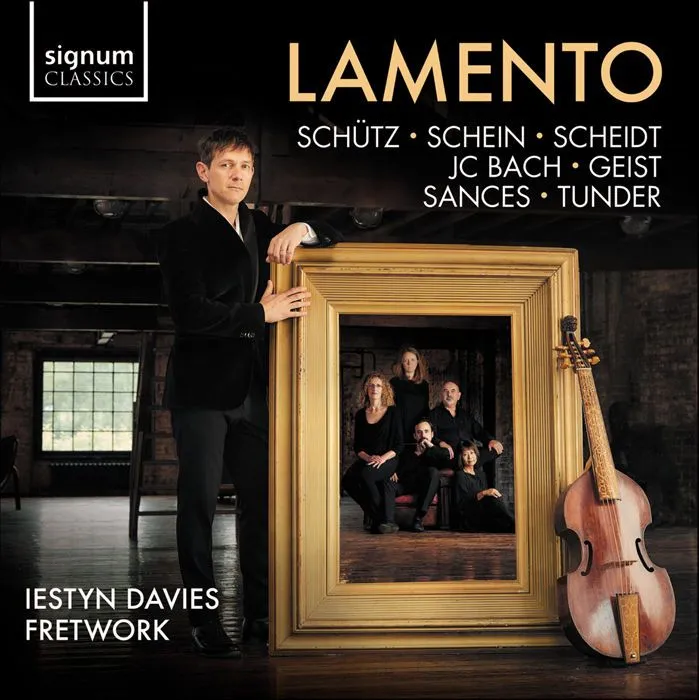
Lamento Works by JC Bach, Geist, Sances, Scheidt, Schein, Schütz and Tunder Iestyn Davies, Hugh Cutting (countertenor); Fretwork; Silas Wollston (organ, virginals) Signum Classics SIGCD684 64:51 mins
We do not get to hear early Baroque music from Germany very often, and so this offers a revealing glimpse into that cultural world. Moreover, the interest in viol music in that country was second only to that in England, which explains the central and welcome involvement of Fretwork in this recording. Mostly these works come from composers working either in the Leipzig/Dresden/Eisenach triangle of middle Germany (Schütz, Scheidt, Schein, JC Bach) or in North German/Scandinavian territories (Geist, Tunder). The inclusion of Sances, who worked in Vienna, is a bit of an oddity especially since the one piece by him here is not a lament.
From the very first track (Tunder’s ‘Salve mi Jesu’) we encounter the central delight of this recording – the pure, clear countertenor voice of Iestyn Davies. His sense of phrasing and awareness of the changing harmonic colours provided by the accompanying instruments are consistent musical attributes. They are on display too in the unusually chromatic vocal lines of Tunder’s ‘Es war aber an der Stätte’, though the text is a description of Christ’s Passion rather than a directly expressive lament. The two long instrumental suites by Schein have some little gems in them (the ‘Gagliarda’ on track ten), but for me this is more players’ music than listeners’ music. However his setting of ‘Christ unser Herr’ is a rather more impressive and intricate work, consisting simultaneously of a plain and decorated version of a Lutheran chorale melody, admirably sung in duet by Davies and Hugh Cutting.
Anthony Pryer
